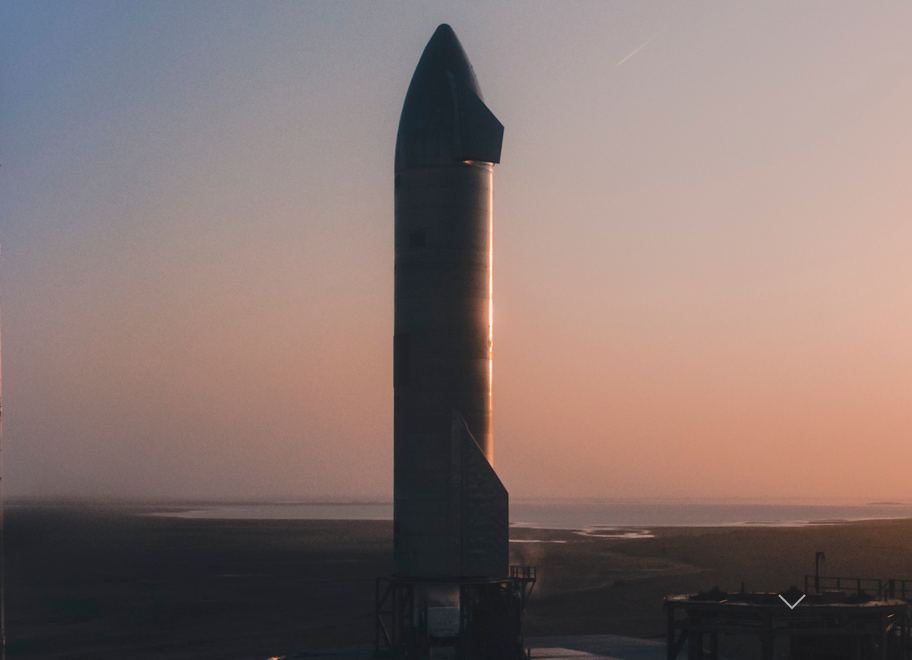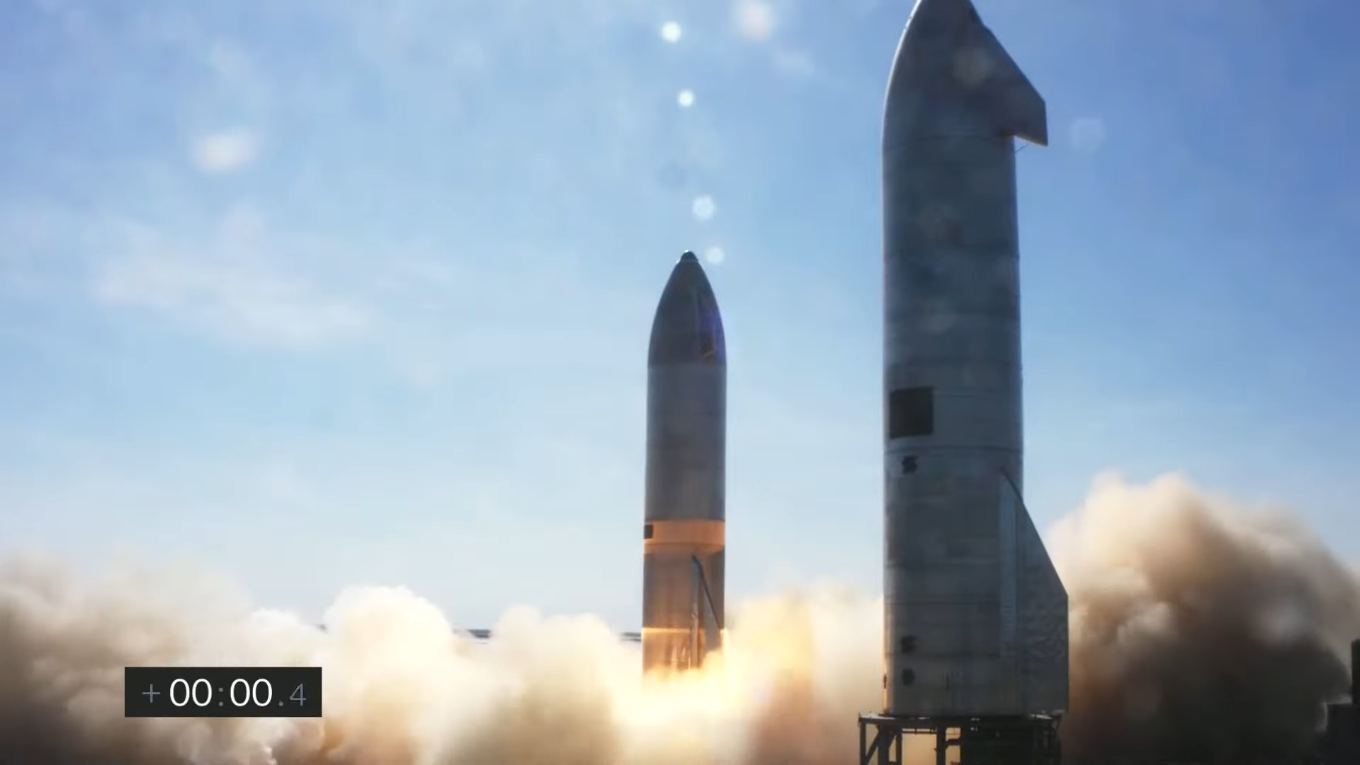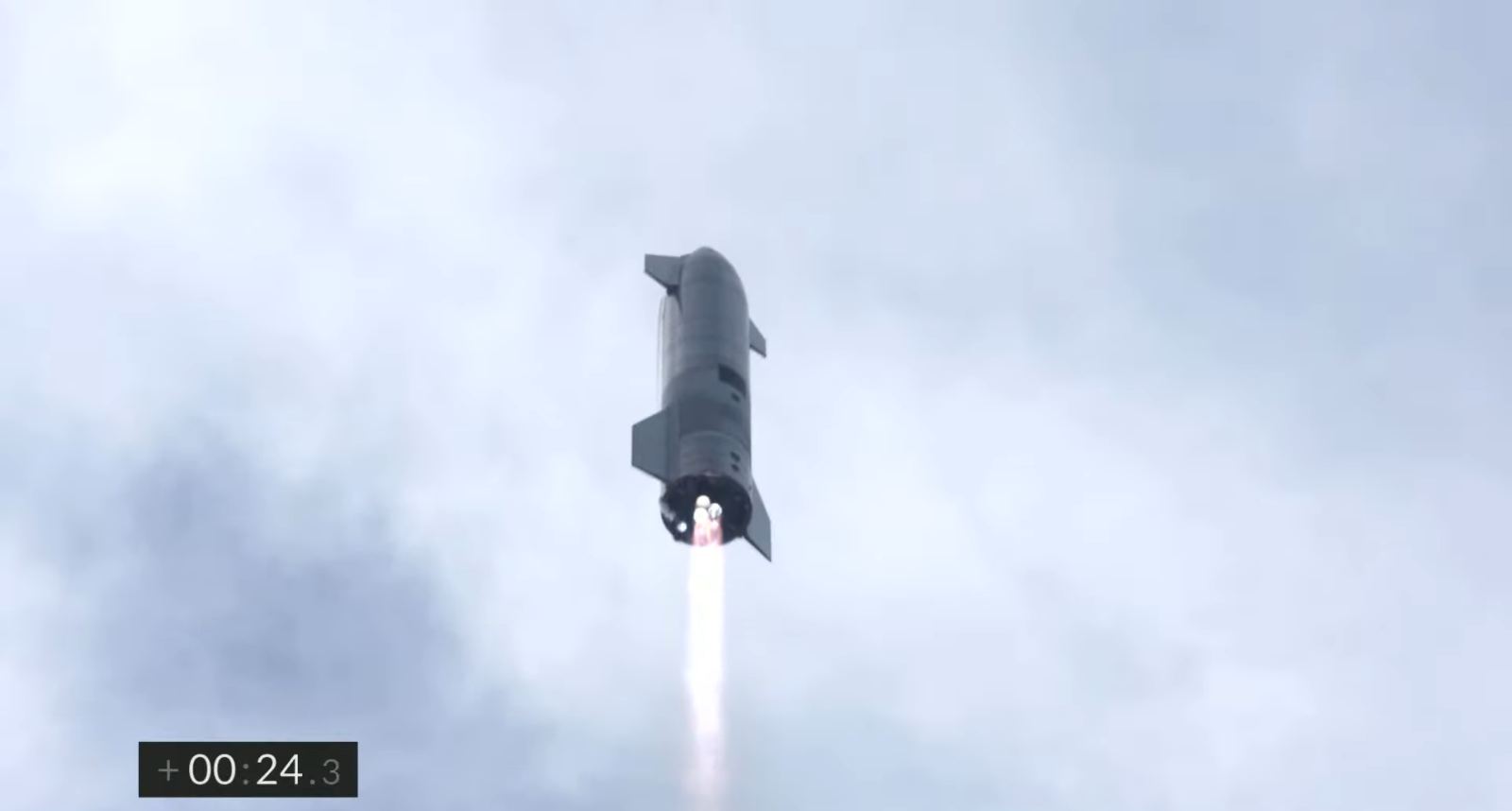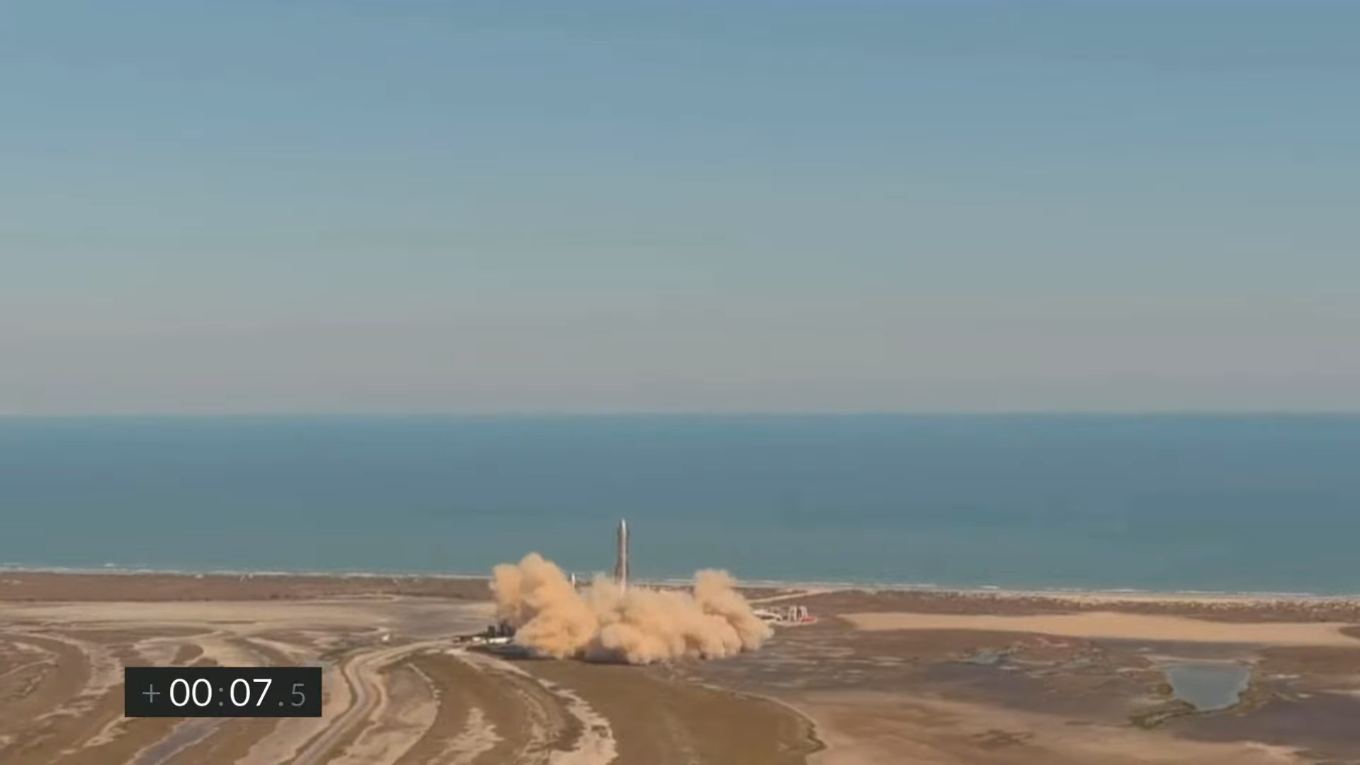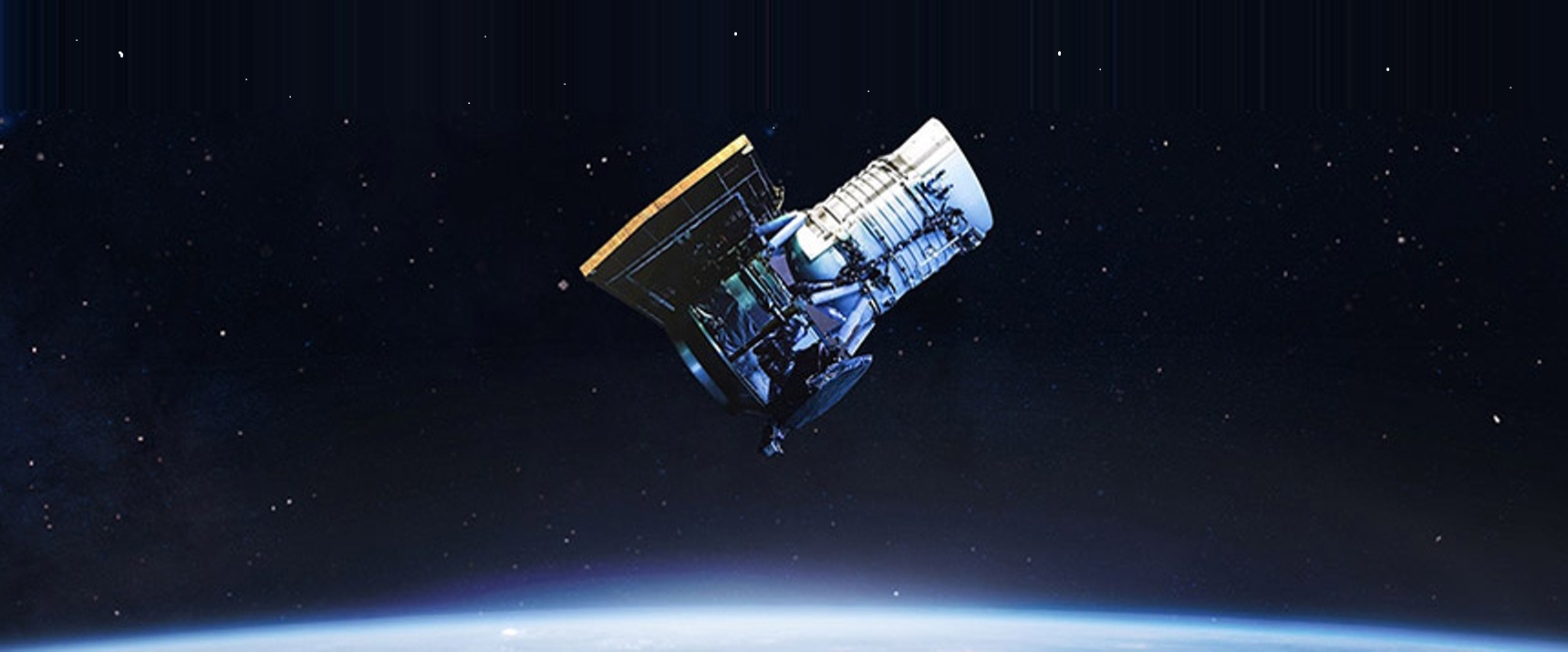If there is one driving force in the commercial space industry it is economics. The whole concept of reusable booster rocket emphasizes the importance of getting launch costs down. SpaceX, the company leading the charge in trying to bring launch costs down, doesn’t just recover booster rockets however. It also recovers the rocket fairings that hold the payload during launch. SpaceX’s original plan was to capture the fairings as they fell back to Earth using specially equipped ships with nets to catch them before they landed in the ocean. Now, however, the company has transitioned to simply fishing fairings out of the ocean after they splash down, and that seems to be working just fine.
Continue reading “SpaceX has Given up Trying to Catch Rocket Fairings. Fishing Them out of the Ocean is Fine”Latest Starship Prototype SN11 Explodes in mid-air, Raining Debris on the Launch Site
Space exploration sure is hard, huh? Luckily, it’s an iterative process, where engineers test and test and test again to work out all the bugs in advance. At least, that’s what we remind ourselves when the prototype goes “kaboom!” Earlier today, the SN11 joins its predecessors by being the fourth Starship prototype to conduct a successful flight test and then explode while attempting to make a landing (or shortly thereafter).
Continue reading “Latest Starship Prototype SN11 Explodes in mid-air, Raining Debris on the Launch Site”Fantastic Analysis of SN-10 Landing and Explosion by Scott Manley
Update: Yesterday (March 9th), Elon Musk shared the reason for the explosion via Twitter. According to Musk, the problem originated with the one Raptor engine used to slow the SN10 down before landing.
“SN10 engine was low on thrust due (probably) to partial helium ingestion from fuel header tank,” he tweeted. “Impact of 10m/s crushed legs & part of skirt. Multiple fixes in work for SN11.“
On March 3rd, 2021, SpaceX conducted a third high-altitude flight test with one of their Starship prototypes (SN10). This time around, the prototype managed to achieve an apogee of 10 km (6.2 mi), a controlled descent relying on nothing but its aerodynamic surfaces (the “belly-flop”), and even managed to land successfully. However, a few minutes after it stuck the landing, the SN10 exploded on the landing pad.
Whereas the SN8 and SN9 explosions were attributed to problems that took place during engine reignition, the cause of the SN10 explosion was not as clear. Thankfully, astrophysicist and Youtube personality Scott Manley (Twitter handle @DJSnM) has offered his take on what might have caused it. Using SpaceX’s footage of the SN10 flight test, he suggests that a slightly-harder-than-intended landing and a fuel tank rupture were responsible.
Continue reading “Fantastic Analysis of SN-10 Landing and Explosion by Scott Manley”SpaceX’s Starship Prototype Flies High AND Sticks the Landing!
They say, “third time’s the charm.” This was largely the case today as SpaceX made their third attempt at a high altitude flight test at their launch facility in Boca Chica, Texas. Like the previous two attempts, this flight saw a Starship prototype (SN10) with three Raptor engines fly to an altitude of 10 km (6.2 mi), conduct a “belly-flop” descent maneuver, and then return to the launch facility.
As with the previous high-altitude tests, the SN10 successfully launched, reached its apogee, and validated the control fins and aerodynamic surfaces. But unlike the previous tests, the SN10 was able to slow down enough and keep itself upright so it could make a soft landing. While the prototype exploded a few minutes after landing (apparently from a methane leak) the flight was a complete success!
Continue reading “SpaceX’s Starship Prototype Flies High AND Sticks the Landing!”Once He Steps Down From Amazon, Jeff Bezos Will be Able to Focus his Energy on Blue Origin
When it comes to the private aerospace sector (aka. NewSpace), some names stand out from the rest. The most obvious of these is SpaceX (the brainchild of Elon Musk and the leading source of innovation in commercial space) and the United Launch Alliance (ULA), a joint venture between Boeing and Lockheed Martin. But what of Blue Origin, the private aerospace company created by Jeff Bezos in 2000?
In recent years, Blue Origin has fallen behind the competition and missed out on several billion dollars worth of contracts. But with Bezos stepping down as CEO of Amazon, industry sources have indicated that this could change soon (according to Eric M. Johnson at Reuters). With all of the opportunities available for commercial space, Bezos is now in a position to take a more hands-on role as the company faces a most pivotal year.
Continue reading “Once He Steps Down From Amazon, Jeff Bezos Will be Able to Focus his Energy on Blue Origin”NASA has Decided to Start Building the Lunar Gateway Using the Falcon Heavy
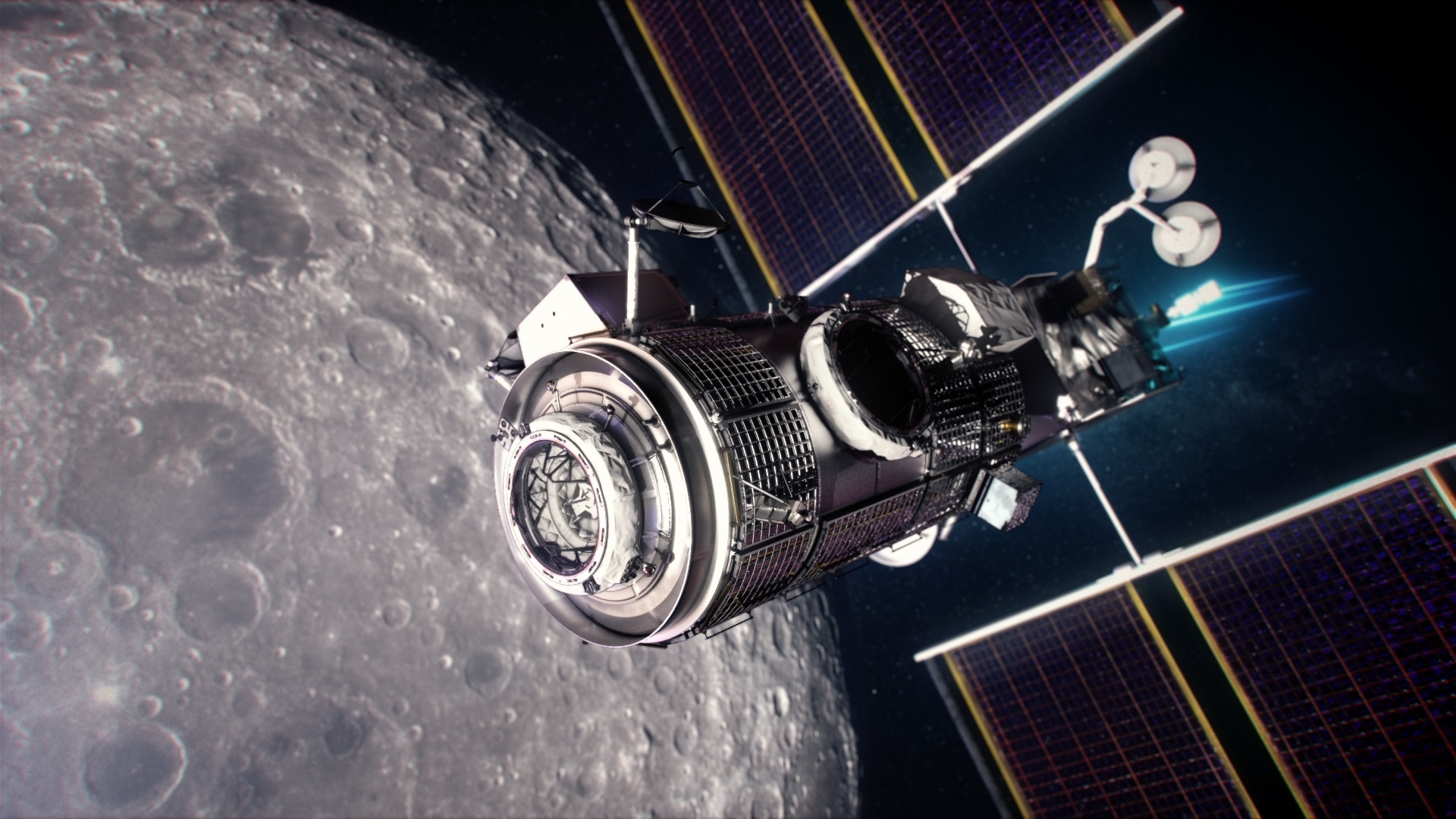
In October of 2024, NASA will send “the first woman and the next man” to the Moon as part of the Artemis Program. This will be the first crewed mission to the lunar surface, and the first mission beyond Low Earth Orbit (LEO), since the closing of the Apollo Era in 1972. Beyond that, NASA plans to establish infrastructure on and around the Moon that will allow for “sustained lunar exploration and development.”
A key aspect of this is the Lunar Gateway, an orbiting habitat that will allow astronauts to make regular trips to and from the lunar surface. After much consideration, NASA recently announced that they have selected SpaceX to launch the foundational elements of the Gateway – the Power and Propulsion Element (PPE) and the Habitation and Logistics Outpost (HALO) – by May of 2024 (at the earliest).
Continue reading “NASA has Decided to Start Building the Lunar Gateway Using the Falcon Heavy”SN9 Tests Ends With a Boom. You’re Up SN10
Another day, another round of testing (and yes, another explosion). Today, on Tuesday, Feb. 2nd, 2021, flight teams at SpaceX’s launch facility near Boca Chica, Texas, conducted a high-altitude test flight with a Starship prototype. Similar to the previous test in December, the SN9 was powered by three Raptor engines, flew to an altitude of 10 km (6.2 mi), then attempted another “belly flop” to test out its fins and aerodynamic surfaces.
As always, the event was broadcast via live stream by SpaceX, NASASpaceFlight, LabPadre, and several other observers. Like the SN8 test flight, SpaceX’s coverage provided multiple vantage points (landing pad, engine compartment, fuselage, aerial drone, etc.) The flight commenced at 2:25:15 P.M. CST (04:25:15 EST; 12:25:15 PST) when the Starship ignited its three engines and began its ascent.
Continue reading “SN9 Tests Ends With a Boom. You’re Up SN10”Axiom Space Reveals the Crew for Its First Space Odyssey in 2022 (Sorry, Tom Cruise)

Axiom Space’s first privately funded trip to the International Space Station will be as notable for who’s not on the crew as for who is.
Sorry, Tom Cruise: Your filmed-in-space movie will have to wait.
Continue reading “Axiom Space Reveals the Crew for Its First Space Odyssey in 2022 (Sorry, Tom Cruise)”Starships Will be Launching From These Oil Drilling Platforms Bought by SpaceX
Over the years, Elon Musk has been rather open about how he (and the company he founded) plan to make space more accessible and allow humanity to become an “interplanetary species.” A key element to this plan is the Starship and Super-Heavy launch system, which will allow for regular trips to the Moon as well as the eventual creation of the first human colony on Mars.
Another key part of Musk’s plan is the creation of spaceports at sea that will allow for greater flexibility with launches and landings. To that end, SpaceX recently acquired two former oil drilling rigs off the coast of Texas. These spaceports have been dubbed Phobos and Deimos (after Mars’ two satellites) and are currently undergoing modifications to conduct Starship launches in the near future.
Continue reading “Starships Will be Launching From These Oil Drilling Platforms Bought by SpaceX”With Funding From Jeff Bezos, MethaneSAT Picks Elon Musk’s SpaceX for 2022 Launch
Billionaires Jeff Bezos and Elon Musk are usually rivals on the final frontier, but they both have a role to play in MethaneSAT, a privately backed satellite mission aimed at monitoring methane emissions.
Last November, the Bezos Earth Fund made a $100 million grant to the Environmental Defense Fund to support the satellite’s completion and launch. That grant was part of a $791 million round that Bezos said was “just the beginning of my $10 billion commitment” to address challenges brought on by climate change.
Now MethaneSAT LLC — a subsidiary of Environmental Defense Fund — is announcing that it’s signed a contract with Musk’s SpaceX to send the satellite into orbit on a Falcon 9 rocket by as early as October 2022.
Continue reading “With Funding From Jeff Bezos, MethaneSAT Picks Elon Musk’s SpaceX for 2022 Launch”

